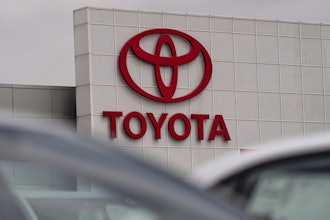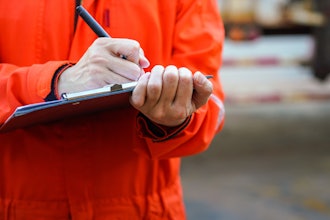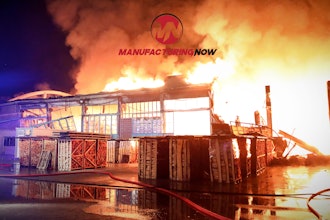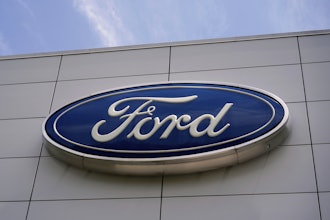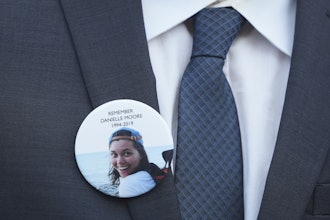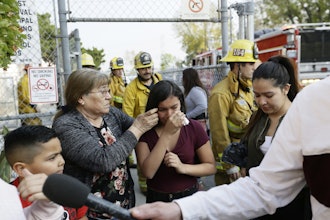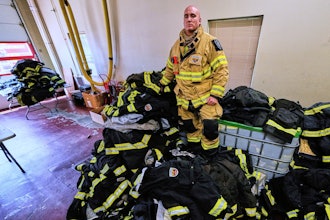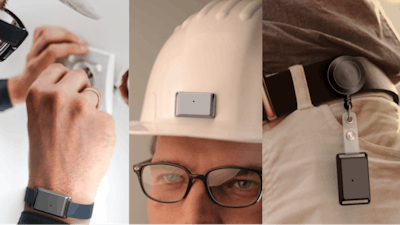
As manufacturers work to combat the spread of COVID-19, tactics like mask-wearing and social distancing have become the norm. Yet contact tracing, despite its effective use in other countries like South Korea and Taiwan, has not.
The reasons why range from scarce public health resources to privacy concerns. However, an innovative new contact-tracing approach developed by Vital Circle is proving to be more conventional, acceptable, and as data is proving — effective.
Vital Circle was created by CEO Amanda Schleede, and her business partner Becky Fox. Amanda’s specialty is healthcare startups, and Becky’s experience is deploying healthcare technology at the right place at the right time in the workflow. And no industry’s workflows are in more danger of disruption than manufacturing.
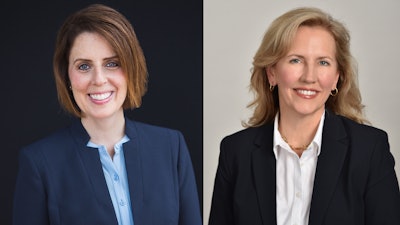 Vital Circle was created by CEO Amanda Schleede, and her business partner Becky Fox. Amanda’s specialty is healthcare startups, and Becky’s experience is deploying healthcare technology.Winbound
Vital Circle was created by CEO Amanda Schleede, and her business partner Becky Fox. Amanda’s specialty is healthcare startups, and Becky’s experience is deploying healthcare technology.Winbound
According to data from the Illinois Department of Public Health in November of 2020, manufacturing/factory facilities produced 43.7% more COVID-19 spreading events than bars and restaurants combined. And even with vaccinations underway, this pandemic, and the potential for future ones, poses a threat to manufacturers for the foreseeable future.
Contact-tracing technology based on a different approach
Vital Circle’s approach is unique in that it doesn’t rely on GPS, biometrics and/or cellphones for its contact-tracing technology. Instead, it uses a web-based, daily-symptom tracking application, and combines it with an extremely lightweight device that’s easy to deploy in the workforce.
Here’s how it works: Employees wear an extremely lightweight device, integrated with Vital Circle’s daily symptom tracker. Using Bluetooth Low Energy technology, each device “looks” for other registered Vital Circle devices.
If they find one, the device sends a message back to the tracking station with the duration of the interaction and approximate distance between the devices. The system measures these device-to-device detections as “contacts.”
The tracing begins when an employee becomes infected with COVID-19, and notifies the employer. The company then can immediately access the system, which sends an email and/or text to everyone who has had contact with the employee within a specific duration of time.
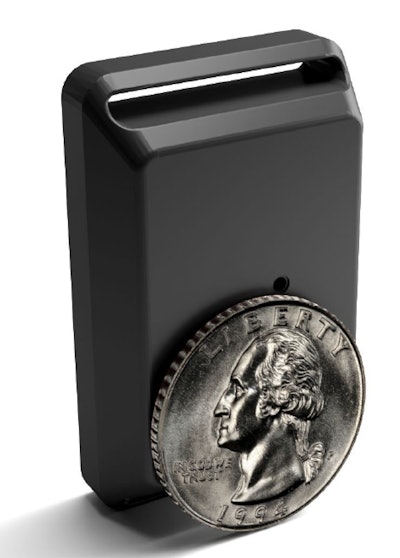 Employees wear a small, lightweight device, integrated with Vital Circle’s daily symptom tracker. Using Bluetooth Low Energy technology, each device looks for other registered Vital Circle devices.Vital Circle
Employees wear a small, lightweight device, integrated with Vital Circle’s daily symptom tracker. Using Bluetooth Low Energy technology, each device looks for other registered Vital Circle devices.Vital Circle
Because there is no GPS tracking, there is no record kept on where the contact between the two parties occurred -- only that it did occur. “I don’t care where the contact occurred,” CEO Amanda Schleede said. “I just want to know that it did happen, and when.”
Schleede often disassembles the device in front of potential clients to show there is no GPS hardware. The devices also do not record biometrics or any other data.
A device designed for workforce acceptance
Privacy is only one of the potential roadblocks for contact tracing, however. Ease of use, deployability, and reporting are also critical for companies. Vital Circle has worked to address each of these areas:
- Devices are easy to deploy, easy to wear: Once employees are given the wearable device, all they have to do is put it on, and they are part of the system. The devices weigh just 12 (twelve) grams, and are smaller than most smartwatches. Devices are quickly issued to employees, much like badges, and they attach to virtually anything -- such as existing badges, lanyards, belt clips, and hard hats.
- Long battery life, less reliance on charging: Additionally, devices have a long battery life — more than six months — which assists with seamless adoption, and batteries are easily replaced with another coin cell battery, so there’s no reliance on employees to charge devices. This makes for less organizational conflict and better adherence to CDC guidelines.
- Employees self-report systems, so no biometric data is collected: Unlike Smart watches or Fitbits, the device doesn’t automatically report biometric data. It’s up to employees to self-report symptoms through a web-based app. Once they do, alerts are automatically sent out to anyone within proximity.
- Integrating with additional risk mitigation services: Through their strategic partnerships with COLA and CLIA certified labs, Vital Circle provides access to additional risk mitigation services, such as on-site rapid and full PCR testing, and at-home testing kits.
- Partnerships with temperature screening technology: Vital Circle’s strategic partnership with a leading temperature screening technology provides freestanding, no-touch temperature screening devices with printing capabilities.
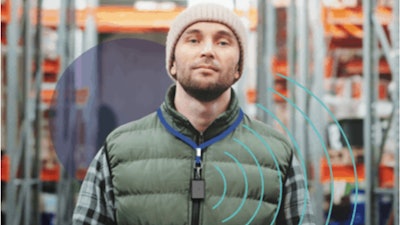 Worker pictured with the Vital Circle device.Vital Circle
Worker pictured with the Vital Circle device.Vital Circle
Case study: 98% compliance and accurate tracing
Does the system work? Scheede cites the example of a recent customer who had experienced an outbreak.
Prior to reporting to work, employees complete a daily-symptom report. In early January, an employee logged into the system and reported having symptoms of COVID-19.
Notice was immediately sent to anyone who had significant contact with the COVID-19 symptomatic individual (15 minutes of cumulative time at 6 feet or less) and those individuals were asked to check for symptoms.
 An example of the contact tracing data.Vital Circle
An example of the contact tracing data.Vital Circle
By noon, 98% of those in contact had replied, and two people reported symptoms.
The company CEO later called Amanda to report the response. “We never would have known about this without your technology,” he said.
With IoT becoming more prevalent through manufacturing facilities, Schleede believes there is potential for the data collection to be used in analyzing workflows and modifying lean manufacturing processes.
“We’re focused on COVID-19 right now, but we see other applications down the road,” she said.
The pandemic (this one or the next) isn’t going away anytime soon
Manufacturers' fingers are crossed that the COVID-19 vaccine will help us emerge from the pandemic in 2021. But there are no guarantees that happens, or that we won’t be just as vulnerable when the next infectious disease comes through (and there is increasing evidence that we won’t be waiting another 100 years for a pandemic).
As a point of reference, after one month of vaccinations being administered, just 4% of the U.S. population had received at least the first injection. If the pace doubles, it will take until 2022 for the entire population to be vaccinated.
Vital Circle’s solution can help manufacturers avoid the wait-and-see approach that’s crippled America to this point. It’s a smart move to protect not only your workforce, but their jobs as well.
In a recent episode of the WBSRocks podcast with Sam Gupta, Amanda Schleede discussed how manufacturers can manage COVID-19 disruptions. She also provided insight into reporting requirements related to the virus and how contact tracing can help manufacturers understand and analyze what's happening at the plant.
To learn more about Vital Circle, visit www.vitalcircle.health.
This profile is a part of an ongoing series by Winbound to expand awareness of top manufacturers through its content marketing for manufacturers.










